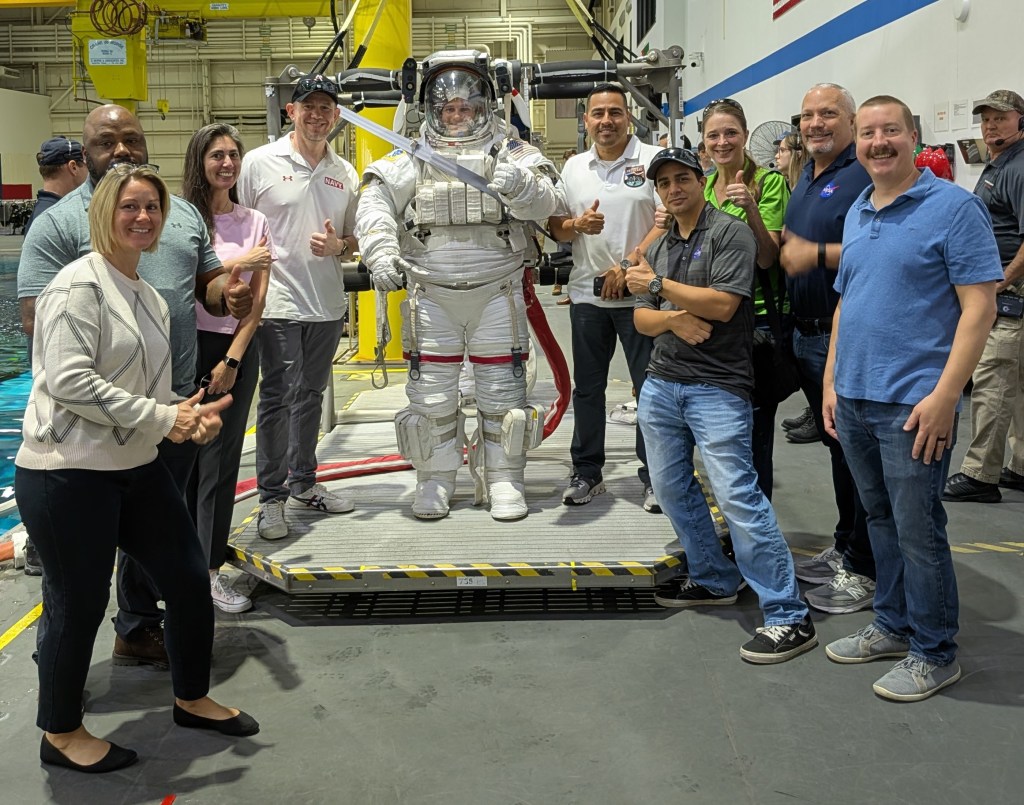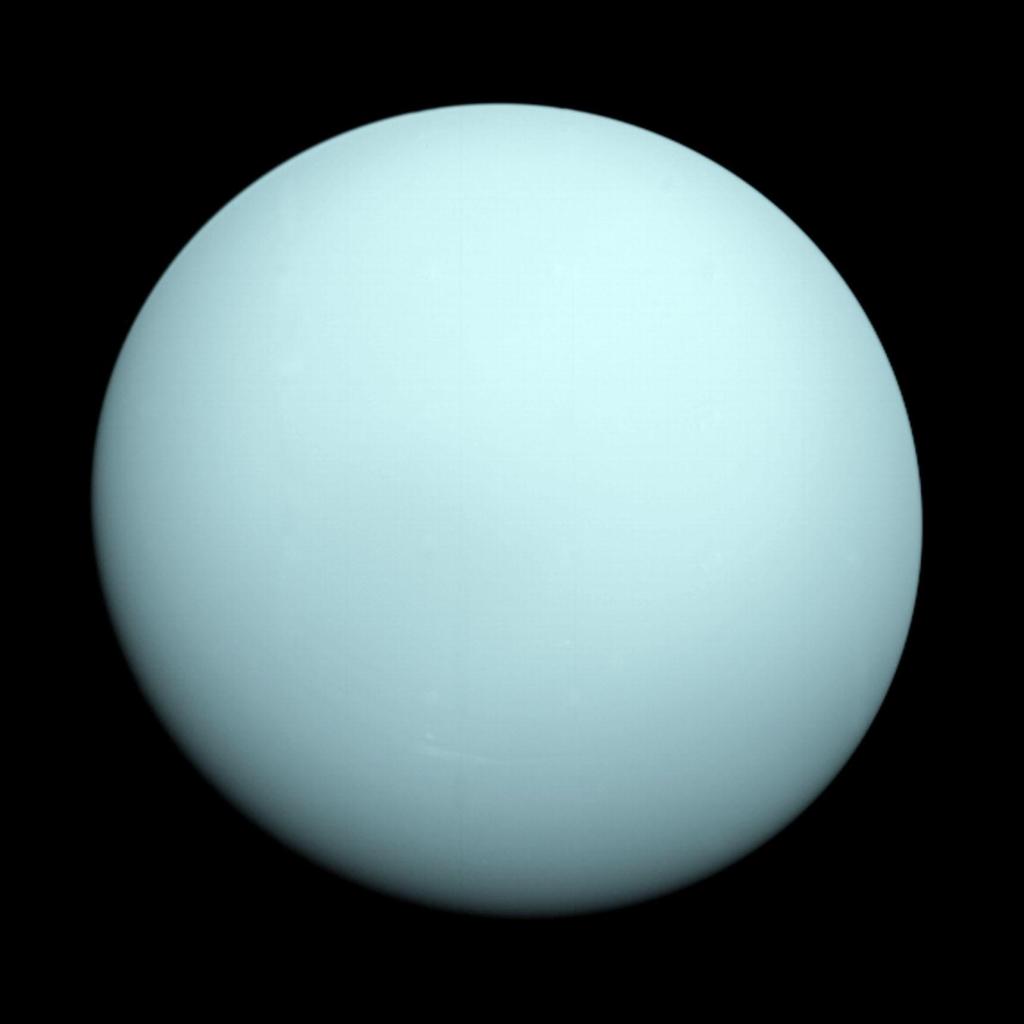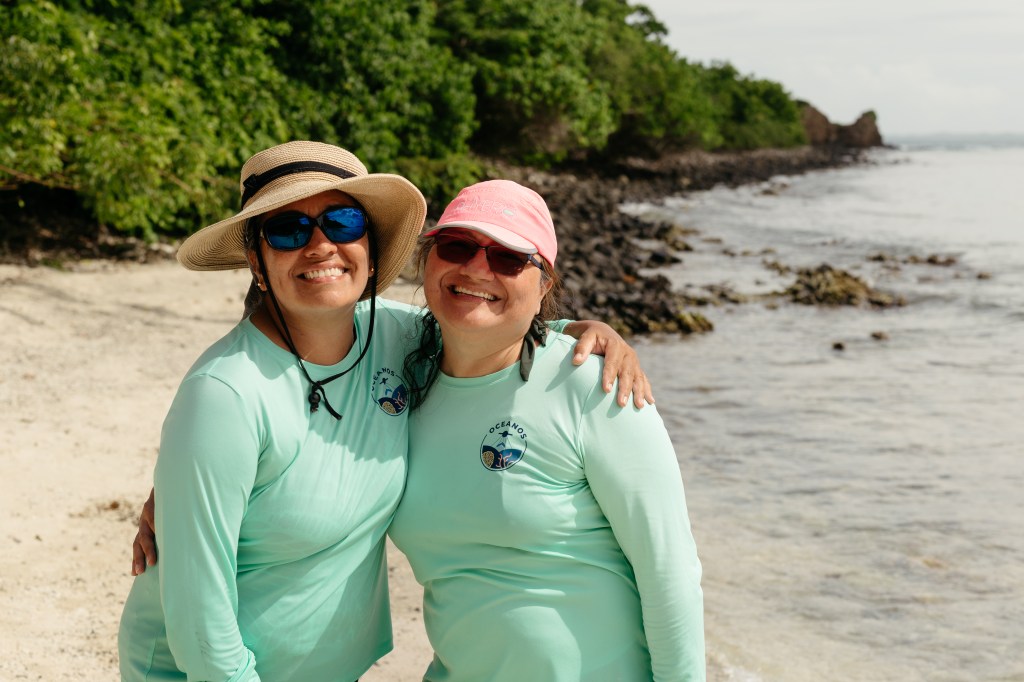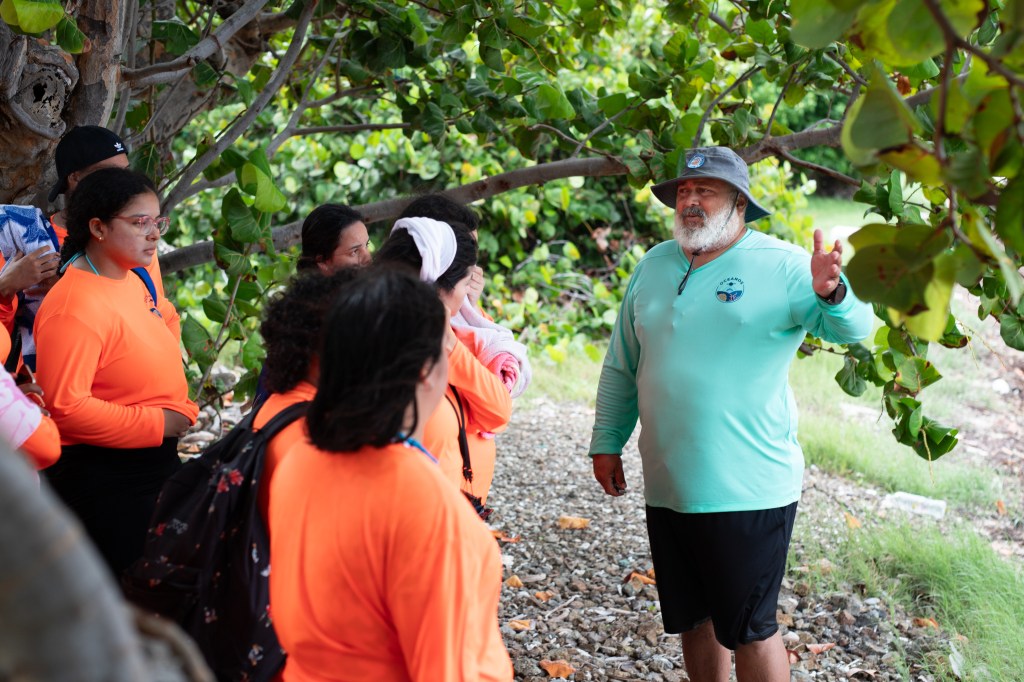Andrés Almeida (Host): Welcome to Small Steps, Giant Leaps, your NASA APPEL Knowledge Services podcast. I’m your host, Andrés Almeida.
The Sun is the ultimate source of life in our solar system, a radiant powerhouse that bathes Earth in the energy necessary for everything from photosynthesis to weather patterns. Its warmth and light sustain us. However, the Sun’s influence isn’t always benign. Its solar wind—a stream of charged particles—can disrupt our technology, causing communications blackouts and GPS glitches. It’s rare, but it happens. This cosmic breeze, while vital for creating the beautiful auroras, also serves as a reminder of the Sun’s dual role as both a life-giver and an unpredictable force.
In this episode, Dr. Joseph Westlake, director of NASA’s Heliophysics Division, joins us to shed light on why the Sun is such a critical focus for space research.
Welcome to Small Steps, Giant Leaps, your NASA APPEL Knowledge Services podcast where we dive into the lessons learned and real-life experiences of NASA’s technical workforce. I’m your host, Andrés Almeida.
Host: Hey Joe, thanks for joining us today.
Westlake: Yeah, happy to be here. Really excited to talk with the giant leaps podcast. I think this is going to be a lot of fun.
Host: So how and why does NASA study the Sun?
Westlake: Yeah, so if you think about it, it’s one of the most constant things in our lives, right? You wake up every morning and you hopefully get a bright, sunny day. You see the Sun come across, across the sky. And I think in many ways, we take it for granted, right? It starts our day, it ends our day, it’s throughout our day. But it has such a huge impact on our lives, day to day, right? Whether it be, whether or not to wear sunblock, but also things like, “Hey, I need to know whether or not the atmosphere of the Sun is going to affect my GPS, whether it’s going to affect my ability to see the aurora tonight, or to be able to see various other things.” It’s that sort of fundamental connection to our closest star and understanding the physics behind how that star works, how it connects to our Earth and how it connects to our society, that’s of most interest to us.
Host: So, we had the Heliophysics Big Year. Can you talk a little bit about that? And what can we look forward to beyond the Heliophysics Big Year?
Westlake: So, the Heliophysics Big Year is, it comes from the world of the Big Year topic. It comes from the world of birding, right, in which you focus on a year’s worth of observations, and you focus on a topic. So, in birding, they would say, “Oh, we’re going to have a big year on this, on this topic, and get as many observations together as we can.”
In the Heliophysics Big Year, we were looking into this massive opportunity to really understand and get closer connected to the Sun, and we found that, because of the impact of the solar eclipses across the U.S. (so, there were two major eclipses), starting with the annular eclipse that started, that was in the fall of last year, and then the Great American Eclipse that happened across the U.S. in 2024, I hope you had an opportunity to see an eclipse, or to see some part of it. I hadn’t personally quite appreciated – I hadn’t seen a full eclipse until this last one, and I hadn’t appreciated the emotional connection that comes with a solar eclipse.
It’s weird seeing something that is so constant and so a part of our life all of a sudden go out. It’s amazing. And you, you see so many details that you weren’t able to see before, right? Those are the things that interest our heliophysicists, that interest our science brains, right? Why? Why can I see these, these prominences coming off of the side of the Sun? I mean, there was a wonderful one during the eclipse, and you’ll see some of these wonderful pictures that people have taken. And there’s a big coronal loop. There’s a big loop coming down from the southern pole. That’s a beautiful, amazing thing that the Earth fits inside of that, right? I mean, you just think about the massive power that comes from our Sun and the impact that it could have across space, across our lives. And it’s, that was our wanting to capture the attention of the public, wanting to capture the attention of scientists, wanting to get our community together to look at this great solar eclipse, and then continue that excitement forward as we go into solar maximum.
You know, we’re going into an environment now where the solar the Sun is the most active that it’s ever, that it’s ever been, right, or that it is within its 11-year cycle. What it does is, every 11 years it has basically a change of the magnetic field of the Sun, and that creates additional activity and additional solar wind, additional impacts on the upper atmosphere.
And we saw, like in May, for instance, we saw some major solar storms that produced aurorae across the U.S. So this, you know, going into solar maximum, and the excitement of being in a technological society and watching these, these aurorae. And in fact, these last couple of aurorae have been even more visible because of the technology that you hold in your in your hands or in your pockets. Folks are being able to use their iPhones and see faint aurorae that they wouldn’t be able to see before.
You know, the last time we had a solar maximum that had these major auroras across the US has been decades, and we didn’t have cell phones that had these amazing cameras on them at that time. So it’s really, it’s really been impactful, and I think it’s touched many Americans’ lives, and frankly, everybody across the world. We’ve seen aurorae in wild places. And understanding why and understanding the physics behind it has been amazing.
Host: Back to the eclipse, it was a historic event. What data have scientists collected? And what do we hope to learn from these two events, the annular eclipse and the total eclipse?
Westlake: Yeah, we did some amazing scientific research during the eclipse. So we had a whole wide array of measurements and observations that were being that were taking place, both, you know, professional scientific measurements, but also using citizen science to produce high fidelity measurements of scientific questions, major questions. One of my favorites is the Sun Sketcher app, in which people took a significant number of images of the Sun, using the specific shape of the Moon to actually use this whole plethora of images of from people’s cell phones, using this app to actually tell the diameter of the Sun right, to get a very precise, you know, measurement of the diameter of the Sun, which is something that we don’t have (that photosphere, that we don’t necessarily have) with that kind of precision. So this citizen science approach really brought forward some amazing new results for us.
We also had a set of eclipse-chasing planes. These eclipse-chasing planes had special instrumentation on board to actually measure the Sun in wavelengths that we don’t generally measure, right in the infrared, and being able to really chase and understand the processes going on in the solar atmosphere. We also had measurements taking place of the ionosphere and of our closer-to-Earth environment, and trying to understand how to whenever, whenever the solar UV goes away, a lot of the ionization that creates this charge boundary, charge layer in our atmosphere, goes away. And so understanding that dip in the ionosphere and understanding how that affects how GPS signals, you know, get through the Earth’s ionosphere (whether or not you know if you were standing in the shadow of eclipse), your GPS precision went down at that point, which was fascinating, right? And being able to understand and predict and use that information to better equip our, you know, high-technology society is huge.
You know, we use these all sorts of technologies now that require centimeter precision on our GPS, right? I mean, your car doesn’t require that. But, you know, if you’re trying to figure out exactly where a seed was planted, so you could water that exact seed and only that seed and not waste additional water – our tractors are equipped with this kind of thing these days, and it requires that kind of information, and little, little bubbles or little changes in the ionosphere can move that around in a big way. So anyway, so that was just a flavor. We had a whole set of sounding rockets that we sent off –three sounding rockets into the eclipse, three sounding rockets into the annular eclipse – and they provided information on the upper atmosphere and how it changed, plus a whole swath of other things, weather balloons, various other things all across the US. So a really, exciting scientific opportunity.
Host: That’s a good segue to talk about the new Space Weather Program Office at Langley. What is that role going to be?
Westlake: So in our space weather program within NASA, we provide really the research basis of the national enterprises, the National Space Weather program. So if you think about space weather within the US, it is the ability to understand and predict and hopefully forecast space weather impacts and understand those impacts on society. Now we do that together with other other agencies to create and enable and build out that program in a way that really interfaces with our, with our collaborators, and creates an environment for our researchers to be very successful alongside all of our colleagues at different agencies.
Host: So we have the Parker Solar Probe. It’s set to fly closer than ever to the Sun this December. It’s going to travel about, what, 435,000 miles per hour? What have we learned so far from this mission, and what do we hope to learn on this orbit?
Westlake: So Parker Solar Probe is a mission to touch the Sun. If you think about our closest, you know closest star, our understanding of it is fairly limited. And if you actually wanted to analyze, you wanted to understand what’s coming off of the Sun, the atmosphere of the Sun, you need to get close enough to actually break the plane between where the Sun’s atmosphere and outer space happens. And so Parker Solar Probe has actually done that. It’s moved into what they call the Alpine sphere, or inside of the point in which information from the Sun no longer is connected to the parcels of plasma that are going out.
So Parker Solar Probe is that mission to really understand how the solar wind is accelerated, to understand what you know uniqueness happens at that boundary to space, at the boundary to space from the Sun to create space weather, to create the solar wind, to create the impacts that we see at the earth. And so these measurements, are the key factors for us to be able to take what you observe on the disc of the Sun, right? We can always observe the disc of the Sun in many, many different wavelengths, but converting that into, okay, here’s what the solar wind is actually doing, and here’s how that impacts the earth. That translation is, is what Parker is going to be able to do.
Host: What are the challenges of studying the Sun, and how are we overcoming those challenges?
Westlake: Yeah, the Sun is really close, right? But it’s also very far. So if you think about, for instance, getting Parker solar probe into the into the upper atmosphere of the Sun, it takes a significant amount of time to actually go that close to the Sun. It takes Venus flybys. It takes complicated technologies to keep the spacecraft cool enough to be operational, to keep the heat off too. You know, all of that sort of thing. I mean, there’s all sorts of different things about the Sun that are complicated. It’s an incredibly bright object, but the thing sometimes we want to see is the atmosphere. Well, if you want to look, look at just the atmosphere, you have to block out the Sun and create an object called a coronagraph.
So you create this, this imager that blocks out very finely, exactly where the Sun is, and so you can only see the atmosphere. That’s a really hard, difficult, challenging measurement to make. Also, if you actually want to observe the full Sun, you know, from our from our vantage point at the earth, you can only see so far up in the Sun’s latitude. You know, we don’t actually have any images of the Sun’s polar regions. We’ve never seen the poles. Totally fascinating, totally unique area. We sent one mission so far over the solar poles, Ulysses, and that mission didn’t have an imager on it. So there’s all these discoveries. And you think about it like, okay, of course, we’ve seen the poles of the Sun, right? How could we have not seen the poles of this object that is, that is with us daily. How have we not seen all of the surface of the Sun? And it’s just, it is orbital dynamics. Getting out of the ecliptic plane is so incredibly hard. So there’s a lot of technological challenges related to to working with and understanding the Sun.
But it also goes down to our ability to understand the Sun’s connection with the Earth, right? There’s challenges that come with creating magnetospheric missions, creating missions that understand that connection, whether it be, you know, creating constellations to look at the dynamics, the global understanding of things, or it be, you know, things like the Magnetospheric Multi-Scale Mission, which is all about getting at the micro physics of what’s going on in the magnetosphere. So we have a whole array of of missions that we’ve supported over the years to really assess, okay, something happens at the Sun. How does that impact me on earth? You know, boots on the ground kind of thing. How does that impact what happens from the Sun to the Earth and tracing that all the way down,
Host: I’d never considered that we hadn’t imaged the poles before.
Westlake: Wild isn’t it? I mean, that is one of those shocking facts that I always I struggle with. Personally, Solar Orbiter, a European Space Agency mission, will actually get some images of the poles as it cranks its orbit up and it, together with Parker Solar Probe, will do you know, one of the most comprehensive measurements of that inner area of the Sun ever. But there’s a lot of work to do, for sure.
Host: To what extent do science teams interface with human spaceflight teams since we’re preparing to send humans on long-duration space missions where radiation is a hazard
Westlake: Yeah, for sure. I mean, what we try to do, especially in the space weather program, is we try to provide information that is actionable for our astronauts, for our humans in space, on their potential risks as far as space radiation goes. You know, the Sun is constantly giving us high energy particles. It’s constantly giving us the solar wind, which can be hazardous to humans and you don’t have the benefit of the earth’s atmosphere or magnetosphere to protect you all the time. You know, if you go to the Moon, there’s only a part of the month where the Moon is actually protected by the earth’s magnetosphere. Most of the month the Moon is actually exposed to the solar wind. And we’ve done a lot of research and analysis with the THEMIS and Artemis missions to understand how that impact is, but also with some of our other lunar missions to really understand what the space environment is at the Moon.
Now, we coupled together with the human spaceflight program to create the HERMES payload. That HERMES payload is set to fly with the Lunar Gateway mission to actually provide that kind of information for the astronauts at the Lunar Gateway. So we, we are constantly asked from the agency, from NASA, to actually come up with novel ways of measuring and understanding the space weather impacts of our astronauts, and being able to really provide that kind of protection, right?
Now, when we say protection, it’s complicated, because our understanding, our research, allows some amount of prediction, right? If I see something happening on the Sun, if I see an active region, I see a sunspot, I can say, “Hey, in the next couple of weeks, in the next couple of days, there’s a high likelihood that that’s going to create something.” But I can’t produce a detailed forecast because we don’t understand it well enough. We haven’t done the research yet to really be able to say, “Okay, in, you know, in four days, it’s, you’re going to get a major solar storm that you’re going to have to, you know, shelter in place for.” We give a few, we give days, hours-to-days’ worth of predictions. In that regard, it is not quite enough to be able to say, “Okay, launch today instead of tomorrow to protect the astronauts.” And so there’s work to go for sure.
Host: Well, there’s a lot of work to do, but which pressing question about the Sun would you like to see answered in your lifetime?
Westlake: Oh, wow. I mean, there’s all sorts of, there’s all sorts of questions that we could go after. You know, we’ve made a lot of progress against how the solar wind is accelerated. It’s wild, right? If you, if you look at the photosphere, where the where all the photons come from, at the Sun, it’s actually colder than the corona. It’s like if, if you were standing next to a campfire and you walked away and it got hotter. Makes no sense, right? So we found a lot of, a lot of opportunities to actually understand some of those acceleration processes. That’s fundamental physics of how a star works.
But then also, you know, understanding the inner, the inner workings of our local star, understanding that, you know, 11-year solar cycle, and being able to predict is a real challenge. We’re finding the solar maximum this year to be significantly more than predicted, right? More sunspots, more activity, more, you know, low-latitude aurorae, more impacts across across the nation, across the world, than we ever expected. And in many ways, that just reveals our lack of understanding and need for further research.
I’ll say, you know, we talk a lot about the Sun itself, but one of the key pieces is understanding the connection of our Sun to our upper atmosphere, and being able to really take measurements from the Sun and understand, you know, with the prolific number of upper atmospheric satellites that are going up, these mega constellations, as well as our low Earth-orbiting human spaceflight programs, you know, all of the commercial entities going into space – we really lack some understanding in that upper atmospheric region. So being able to really understand the dynamics – I liken it to hopping on a plane and using the Farmer’s Almanac for your weather forecast, instead of having, you know, that daily weather forecast to actually understand, we’re sending spacecraft, humans into space, into the upper atmosphere using the Farmer’s Almanac. And so it’s, there’s missions like the Geospace Dynamics Constellation and DYNAMIC which are out there to really understand how our upper atmosphere is impacted by the Sun on a daily basis, on an hourly basis, so we have that proper weather report. So solving some of those puzzles are really key to helping humanity as it travels into into the cosmos.
Host: We here at APPEL have a pressing question for you: What was your giant leap?
Westlake: So I took an interesting route along to this position today. So when you talk about giant leaps, like I always think of, do you, do you look before you leap, or do you just leap? And hope it works out. And I’ve taken a few of those in my career to today. I took a chance on proposing an instrument for the Europa Clipper mission, which is going to launch in October. That was early in my career. And you know my “look before your leap” kind of situation, did I know what I was in for? Not really. Did we sort it out along the way? Absolutely.
You know, applying for this job was a giant leap in many ways. You know, I had a lot of, I think, self-doubt about actually putting in an application and being, you know, “Am I ready for this kind of career? Can I do this?” And actually, it was, it was my wife who helped me. She sat with me, and she’s like, “Hey, I think I think you’re sort of underestimating your abilities here. I think you’re underestimating yourself. You should take that giant leap. You should give it a try.” And it’s been amazing, right? So I, I’ve had a few of those giant leaps and each one has worked out in my favor. It’s worked out amazingly. And frankly, [it] makes me want to take a few more as I as I continue forward.
Host: Joe, thanks for talking to us about our closest star and for sharing your insights.
Westlake: Thank you so much, Andrés. This has been great. I really, really enjoyed the conversation.
Host: That’s it for this episode of Small Steps, Giant Leaps. For more on Dr. Westlake or the topics we discussed today, visit our resource page at appel.nasa.gov. And don’t forget to check out our other podcasts like Curious Universe and Houston and Houston, We Have a Podcast. Thanks for listening.


























